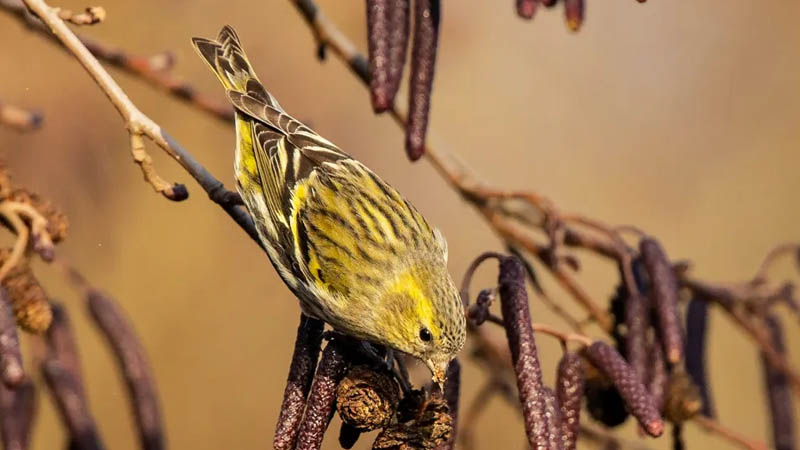Eurasian Siskin
Spinus spinus (Linnaeus 1758)
Photo: © Martin Grimm

Editors Note:
This is a shell account and still needs to be completed, but is a species we plan to cover.
Appearance
A small finch with a striking sexual dimorphism. Adult males bright yellow-green and black body parts and flight feathers, black crown. Adult females pale-grey and black, yellow-green wingbars, boldly streaked underparts. Juveniles lack the black crown but ear coverts yellow-green tinged, thinly streaked underparts.erparts.
Natural History
The Eurasian Siskin is widespread in Europe and discontinuously in East Asia. They are more or less bound to conifers, but can also be found in deciduous forests, especially in winter.
It is a regular migratory species, but migratory movements decrease from north to south in its distribution area. During food shortages, invasions occur. Then large groups of several hundred birds can be observed.
Eurasian Siskins can also be observed frequently at bird feeders. The mainly feed on seeds, shoots and fruits, but also invertebrates.
Taxonomy
monotypic
-> W and N Europe to E Russia and NE China
Object of study
Mimicry in song.
Song

PFR16543, 10/04/2020, Lehnin, Germany, Patrick Franke



